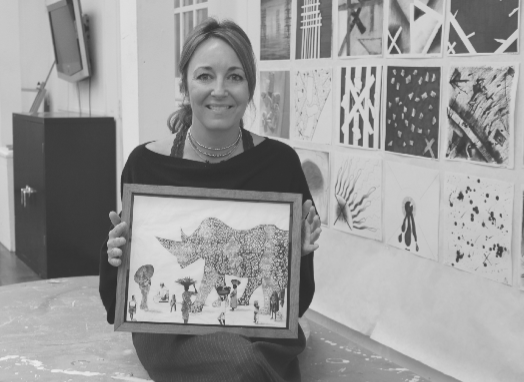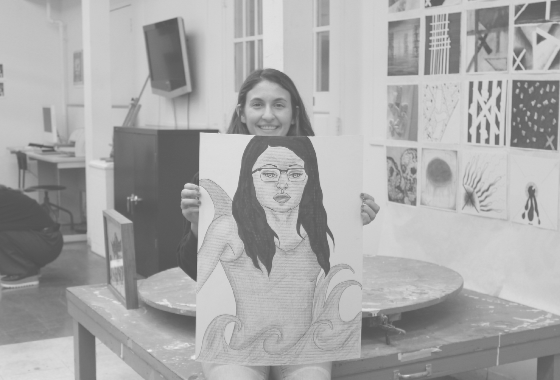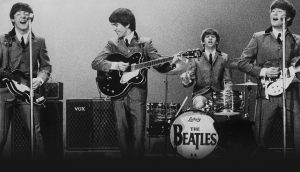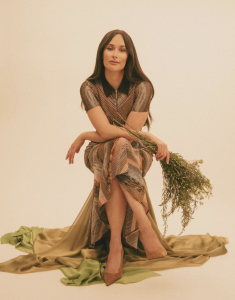By Ashley Bowden
Arts & Entertainment Editor
Graduate art therapy students are presenting original work in an exhibition titled “We Can’t Find the Words” opening Nov. 16 in the sculpture building.
The reception will last from 6 to 8 p.m. and will showcase the work of 25 artists. Since many of them aspire to become licensed art therapists, they must first learn to access their own emotionally difficult experiences and work towards healing themselves through their own art. “Every art-making experience is personal for artists and all artists have worn a thorn or two in their side,” adjunct graduate professor of fine arts, Anncharlotte Tavolacci, said. “This course examines how we can investigate those thorns to come up recreated.”

Elizabeth Jordan, her artwork will feature pencil drawings and photography.
Elizabeth Jordan, second year graduate student, will feature a mixed-media piece inspired by a trip she took to India and Africa. The piece is comprised of pencil drawing and a photography collage that depicts people next to a “big sci-fi-fi type rhino from Jurassic Park,” Jordan said. The people appear to be completely unphased by its presence. “My topic is mid-life transition, as opposed to mid-life crisis,” she said. The theme focuses on life when people are between the ages of forty and sixty. “As we start to age, our bodies start to get older, understanding about mortality begins to come into play,” Jordan said. She believes this is a time to redefine oneself and adjust to abrupt changes, and she wishes to help people better maneuver through it effectively.
Jordan completed her master’s last year and is currently taking a break from the commercial art world to immerse herself in the art therapy degree program. “I was really wondering what to do next, and just by chance a friend of mine had a stroke,” she said, “This is one of those things that we have to deal with.” She started working with him in making clay-based art and started thinking about those with neurological ailments will live the rest of their lives.

Janie Terracciano, her artwork is inspired by her fear of sharks
Jaime Terracciano, second year graduate student, is showing work inspired by her fear of sharks. In it, she illustrated herself with a shark’s dorsal fin wearing a red bathing suit. “I did the waves to symbolize being swamped by my fears of sharks,” she said. Originally, Terracciano intended for the red suit to represent blood, but after conferring with classmates, it’s resemblance to a life guard’s uniform has come to stand for safety. “I probably just want to feel safe in the water, instead of afraid. “[My experience] has been really nerve-wracking,” Terracciano said, describing preparing for her first show, “I made so many drawings that I didn’t know which one to choose. But in the end it was a good opportunity to become really creative.”
Kemika Jindawong, first year graduate student from Thailand, drew her inspiration from how she portrays her own emotions. One piece she will be displaying is a clay mask. “I want to find my happiness, and how to turn from sadness to happiness,” she said. “I want to make a really happy face, and when I worked with my mask, the result looked really sad.” This taught Jindawong that she cannot hide her sadness and has to accept it as part of herself; the theme of her work is titled “Self-Acceptance.” Jidawong’s other piece will be a watercolor painting.
Previously, Jindawong has done a show in Thailand about sensory perception. She drew portraits of 100 different women to make up the exhibition. Her pursuit of art therapy is greatly fueled by the students she teaches at her studio in Thailand. Some of the students have ADHD, emotional stress, or aggressive tendencies, so working on art helps with their concentration. “I want to help them with my art.”
Jay Barba suffered a head injury in 1989, hospitalizing him for three months, so his art is inspired by his recovery. “I couldn’t recognize my mother, I didn’t know the alphabet, I forgot everything,” he said, “It most seriously damaged the part of my brain that controls verbal function, so I couldn’t speak clearly.” Once he realized he wasn’t having a nightmare, he had to push himself to get everything back. Barba still considers himself to have had a “happy ending” since he was able to recover more successfully than his fellow patients, “I was only seventeen, so I was still producing new brain cells,” he said, “I was one of [the hospital staff’s] favorite success stories.”
“I feel like I’m finally focused; It’s refreshing and exciting,” Barba said, commenting on his experience in class. He describes his art as introspective; his piece “My Thoughts” will be displayed during the exhibition. “It shows how lost I was and how I felt I was facing insurmountable challenges,” he said. He wants his work to push people to succeed.
A wide variety of projects will be featured, each inspired by a different person’s life and made of multiple different media. “All of them are intended to evoke a sense of catharsis,” Jordan said. The works are a way for the artists to seek pleasure, relaxation and a deeper understanding of themselves. This is in preparation to work as therapists who will have to help clients uncover things in their subconscious. “This is a tough class because we really have to be ready to come head- to-head with topics that we haven’t explored in- depth before,” Jordan said.
“Everybody has their own fears but we can overcome it, and art is a great way to express those things,” Terracciano said.




Be First to Comment